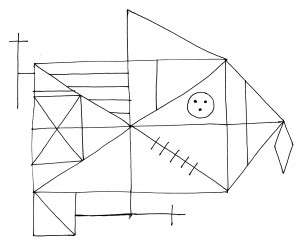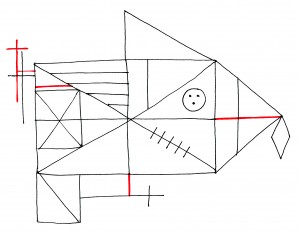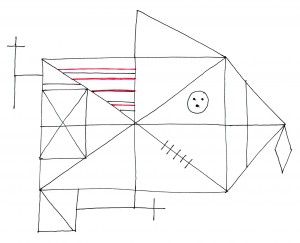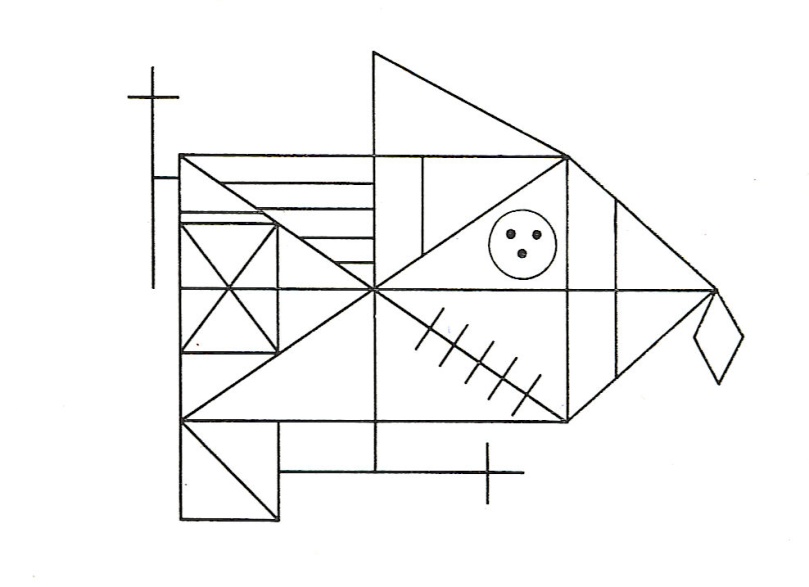Cosima Gretton is a doctor focused on combining the sciences and the arts, furthering the development of innovative design for improving healthcare. I attended a talk by Dr. Gretton and found I could agree with many of her points, as I support integration between the humanities and sciences, thinking students should be less pushed to focus on solely one or the other, and not study their chosen subjects in isolation from real-life factors that affect them.*
The talk began with noting the ‘Medici Effect’ and a reference to a lecture, The Two Cultures by C.P. Snow, that insisted this divide between art and science is what is holding humanity back from tackling problems. And so Dr. Gretton founded AXNS Collective, an initiative to combine the two. Their logo came as inspiration from the Rey–Osterreith complex figure test, a complicated image composed of many shapes and lines designed to help analyse the brains of those suffering from dementia. I tried the test out to see how I’d do, and although I can’t accurately analyse my strokes for hidden mental traits, I did find it a useful memory exercise.

In accordance with the guidelines, I first copied the image down (there’s no time limit, but time is taken into account by doctors), and then drew my second from memory a few seconds after I’d finished the first.

I remembered a fair bit, although the aspects I did forget were the less obvious strokes without something key to remember them by. The third I drew the next morning, and evidently remembered mistakes from before, but got the spacing of some lines mixed up – although I remember knowing whilst drawing, that something was off. This was clearly not a fair test as I was aware I would have to draw the figure from memory when I began, unlike patients who don’t know they’ll be re-drawing it, plus (as far as I am aware) I am not suffering from dementia. I just wanted to try it out for fun.

Something Dr. Gretton worked on as part of AXNS Collective, was the Affecting Perception: Art & Neuroscience, a project showing the artistic styles of various established artists, who have various conditions of the brain.
Some of these artists included William Utermohlen who had Alzheimer’s disease, Jon Adams with Asperger syndrome, who would add to the canvas throughout the day so that his art looked similar to a graph of a geological cross section of the Earth. Jon Sarkin suffered from a stroke, and has many repetitive aspects in his artwork. George Widener is an autistic savant with a calendar calculation ability, reflected in his work that incorporates the dates of his birthday (February 8) for many years into the future.
Dr. Gretton also went to Singularity University, where the focus is on generating business initiatives targeted at helping people on a global level. They mainly tackle the ‘big problems’ of the world, like water, food resources, healthcare and so on. As seen in Singularity University, combining science and the arts also results in apps with beautiful UX (user experience) design that monitor health. An example given in the talk was the Sleepio program, designed to provide digital – rather than medicinal – therapy for those with insomnia.
A quote we were left with, was the philosophy of HELIX Design Studio:
“Real medical breakthroughs occur when people-centred design and scientific rigour collide.”
Although clearly focused on medicine and visual art (either art curations with an aspect of biology, or medicine with a nod towards design), I was glad to see someone who had reached across wide subject areas and combined them successfully, as I enjoy cross-disciplinary education and work (I mean, things do usually work like that!). I hope to combine my interest in many (seemingly) contrasting areas, in a similar way Cosima Gretton has done so well.
*It seems I advocate more liberal, Montessori style, education systems for want of a better example, specifically those where students receive project work and – while working towards an end-goal – combine and develop knowledge in multiple subject areas. Some students from my school recently participated in an exchange program to Australia, attending the Ascham School in Sydney, that follows the Dalton Plan and when told about their experience, I was impressed with the organisation of the program; an interesting element being that students submit and collect assignments on Tuesdays, designed so students are able to enjoy their Sunday with family instead of working to meet a deadline.

